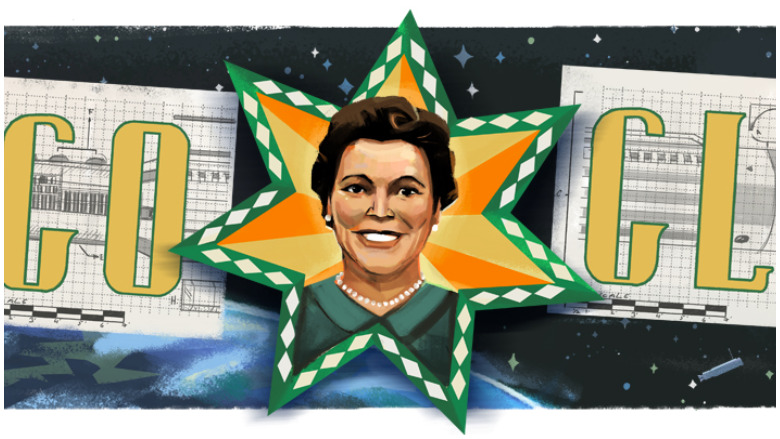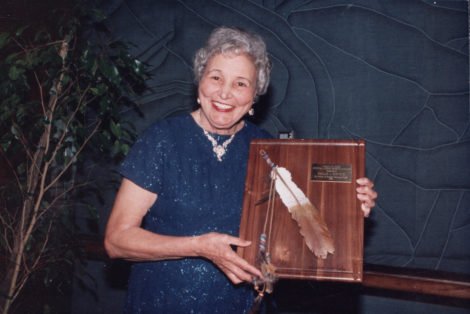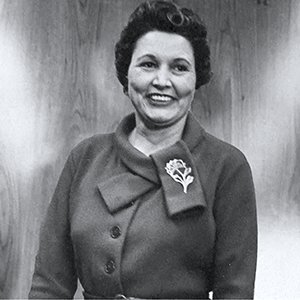
Google Doodle Mary G. Ross
Mary G. Ross, the first American Indian female engineer, and a highly regarded pioneer in her industry, is the subject of a Google Doodle honoring her 110th birthday.
The contributions of Mary G. Ross to the aerospace industry “include the development of concepts for interplanetary space travel, manned and unmanned earth-orbiting flights, and orbiting satellites,” Google noted.
Google called Mary G. Ross “a pioneer who reached for the stars and whose legacy continues to inspire others to do the same.” Mary Golda Ross was born on August 9, 1908 and is regarded as the first American Indian woman engineer.
Here’s what you need to know:
1. Mary G. Ross Was the Great-Great Granddaughter of a Cherokee Nation Chief
Mary G. Ross is of Native American heritage as she is descended from a Cherokee Nation chief.
Ross was the “great-great granddaughter to Chief John Ross of the Cherokee Nation,” Google wrote on August 9, 2018.
Chief John Ross, according to The Smithsonian, “fought to preserve his nation from white settlers’ incursions—and later was forced to lead his people along the march that became known as the Trail of Tears.”
His great-great-granddaughter became her own force to be reckoned with.
According to The Smithsonian, in 1958, Ross – whose full name was Mary Golda Ross – “stumped the panelists on ‘What’s My Line?’ It took the actors Arlene Francis and Jack Lemmon, journalist Dorothy Kilgallen and publisher Bennet Cerf, celebrity panelists of the popular television game show, quite a while to figure out her M.O.”
According to The Smithsonian, Ross reconnected with her Native American roots only later in her life, but when she did she was known for “mentoring and supporting others in her field and calling attention to her heritage.”
When the Smithsonian opened the National Museum of the American Indian in 2004, Ross attended in ancestral dress and “left a bequest of more than $400,000 to the museum upon her death in 2008,” The Smithsonian Magazine reported.
2. She Had a Love for Rocket Science & Astronomy
According to Google, Mary G. Ross had math skills that “were surpassed only by her passion for aviation and the sciences. After teaching in Oklahoma for 9 years, she attended the University of Northern Colorado to pursue her master’s degree and love for astronomy and rocket science.”
During World War II, Ross “was hired by Lockheed Aircraft Corporation as a mathematician. It was there that she was encouraged to earn her professional certification in aeronautical engineering from UCLA in 1949, after which she broke new ground as one of the 40 founding members of the top-secret Skunk Works team,” Google wrote.
Her work on the team “included developing initial design concepts for interplanetary space travel (including flyby missions to Venus and Mars) and satellites including the Agena rocket (depicted in today’s Doodle),” wrote Google.
“Often at night there were four of us working until 11 p.m.,” she later recounted, Google noted.
“I was the pencil pusher, doing a lot of research. My state of the art tools were a slide rule and a Frieden computer. We were taking the theoretical and making it real.”
According to a biography of Ross, “Ross was later to remark that she had been brought up in the Cherokee tradition of equal education for both boys and girls. She was, however, the only girl in her math class, which did not seem to bother her. Indeed, her early interests were math, physics, and science.”
3. Mary G. Ross Was a Pioneer for Women & American Indians Hoping to Pursue Careers in STEM Fields
Mary G. Ross is considered a pioneer both for women and for American Indians interested in STEM fields.
“Leading by example, Ross also opened doors for future generations of women and American Indians by participating in efforts to encourage their pursuits in STEM fields, including being a member and Fellow of the Society of Women Engineers (SWE),” wrote Google.
According to Cherokee.org, Mary Golda Ross had “a lifetime of success in aerospace technology as the first woman engineer for Lockheed Missiles and Space Company.”
“The accomplishments of Mary Golda Ross epitomize the Cherokee spirit,” said Chad Smith, Principal Chief of the Cherokee Nation, to Cherokee.org. “This exceptional woman was and will continue to be a great example to each of us. Her ambition and successes exemplify the importance of education and are evidence of the doors that can be opened through higher learning.”
4. A Scholarship Was Established in the Name of Mary G. Ross
According to Google, there is a scholarship in the name of Mary G. Ross that aims to encourage other women to become engineers.
“In 1992 the SWE established a scholarship in Ross’s name, which aims to support future female engineers and technologists, including Aditi Jain, a current Google Maps engineer,” wrote Google, quoting Jain as saying, “More than money, it gave me confidence. I don’t think I considered myself an engineer until I received the scholarship.”
Cherokee.org reports that Ross “taught school in Oklahoma for nine years. Ross then went on to work for the Bureau of Indian Affairs (BIA) in Washington D.C.”
5. The Family of Mary G. Ross Helped Create the Google Doodle
Google gave “special thanks to both the family of Mary G. Ross and the Society of Women Engineers for their partnerships on this project.”
According to Google, Jeff Ross, nephew of Mary G. Ross, shares his thoughts on his aunt’s legacy:
The Ross family is excited that Google has chosen Mary G. Ross for a Doodle on her 110th birthday. A proud Cherokee woman and the great-great granddaughter of Chief John Ross, Mary is an excellent role model for young women and American Indians everywhere. Her accomplishments are a testament to her determination and love for education. Our hope as a family is that her story inspires young people to pursue a technical career and better the world through science.
Mary G. Ross died in 2008 at the age of 99.




